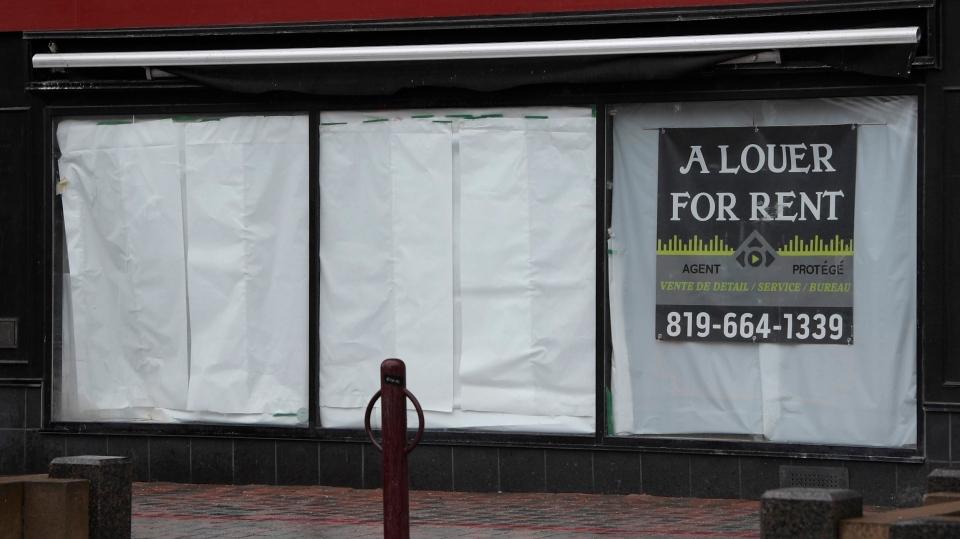circuit breakerrestrictions to reduce social contacts by about 50 per cent, booster shots alone will likely not be enough to stop daily cases reaching between 6,000 and more than 10,000 per day by the end of 2021.
Such measures, coupled with a sustained booster shot campaign of about 250,000 to 350,000 per day, could keep new cases below 5,000 per day in the same time frame. The most new infections ever recorded in Ontario during the pandemic were 4,812 on April 16, during the peak of the third wave.
It’s not a lockdown, it’s not a stay-at-home order. But it does involve a reduction in contacts,said Adalsteinn Brown, co-chair of the advisory group, who presented the latest forecasts at a news conference in Toronto.
This will likely be the hardest wave of the pandemic. There is still some uncertainty but there is an undeniable urgency,Brown said.
Waiting to take action means waiting until it is too late to take action.
The measures could include things like further capacity restrictions for indoor settings, and better enforcement of masking rules, Brown said.
It’s not anything new, it’s just those basic public health measures,he continued.
Every day that you wait you have a greater spread, and a bigger challenge ahead of you.
Without further additional measures, admissions of COVID patients to critical care could, in an absolutely worst case scenario, reach 600 by the new year, the modelling suggests.
The province has said about 600 ICU beds are available, with nearly 500 more available for surge capacity if needed, but experts have said surgeries will start to be affected once roughly 300 COVID-19 patients are in intensive care.
As of yesterday evening, there were 328 people with COVID in hospital, up from 309 at the same time last week. Similarly, there were 165 patients being treated for COVID-related illnesses in ICUs, up from 155 last Thursday.
7% test positivity rate
Meanwhile, Ontario reported 2,421 new cases of COVID-19 on Thursday, the most on a single day in seven months and an 88 per cent increase over the same time last week.
Today’s additional cases push the seven-day average to 1,676, a 59 per cent jump from last Thursday.
The science table’s most recent estimate has the number of new Omicron-linked cases in Ontario on pace to double every two days or so.
On Wednesday, the provincial government announced some new measures (new window) in response to the highly infectious variant.
Among them is an accelerated rollout of COVID-19 booster shots, which will be available starting Monday to residents over 18 whose second dose was at least three months ago.
Public health units collectively administered another 119,286 boosters yesterday. A total of 1,441,100 Ontarians have now had a third dose.
The province also said it will cut capacity to 50 per cent at certain large venues that can hold 1,000 or more people, including sporting arenas and cinemas, starting Saturday.
Brown said the move will help, but will not be enough to prevent the potential outcomes laid out in the latest modelling.
Moreover, the province said up to two million rapid tests will be available for free at pop-up testing sites in high-traffic settings including malls, retail settings, holiday markets, public libraries and transit hubs over the holidays, as well as at select LCBO locations.
You can find a list here of pop-up sites confirmed so far. Each person is limited to one pack that contains five tests.
Omicron is infecting between four and eight times more people than Delta, according to Dr. Kieran Moore, Ontario’s chief medical officer of health, and has already become the dominant strain in the province.
Public Health Ontario reported a seven per cent positivity rate from 54,724 tests on Thursday. That’s the highest level since May 18, when a rate of 7.6 per cent was reported on just 22,915 total tests.
While cases and positivity rates are spiking in much of the province, the number of COVID patients in hospitals and intensive care has continued to hold relatively steady, though there are signs that the burden is slowly increasing.
The Ministry of Health also reported the deaths of nine more people with COVID, pushing the official toll to 10,102.
CBC News



